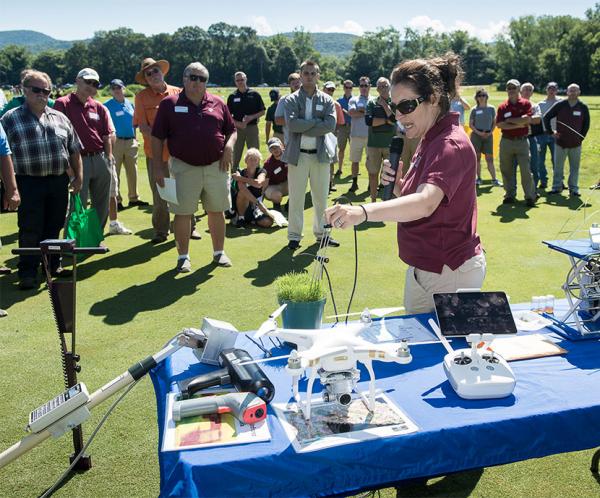Many parts of the country really haven't had much in the way of summer-like conditions this year, so it's a little hard to believe it already is time for many superintendents to begin thinking about winter prep.
 GRIGG (formerly Grigg Brothers), in cooperation with the universities of Massachusetts and Georgia, is presenting a three-day series of TurfNet University Webinars covering just about all aspects of winter prep on golf courses.
GRIGG (formerly Grigg Brothers), in cooperation with the universities of Massachusetts and Georgia, is presenting a three-day series of TurfNet University Webinars covering just about all aspects of winter prep on golf courses.The three-day seminar takes place from 1-2 p.m. each day from Sept. 26 through Sept. 28.
Michelle DaCosta, associate professor of turfgrass physiology at UMass kicks things off Sept. 26 with her presentation titled Maximizing cool-season turfgrass physiology and management for winter survival.
DaCosta has published research on the effects of winter conditions on annual bluegrass and creeping bentgrass. Her presentation will focus on a practical overview of cool-season turfgrass physiology and management strategies as related to low temperature preconditioning and winter survival.
Topics for discussion will include the major causes for winter injury in northern climates, physiological mechanisms aiding in turfgrass freezing tolerance, as well how environmental conditions and management practices interact with turfgrass physiology to impact winter survival.
Attendees will gain a better understanding of best management practices to help minimize winter injury and promote turf recovery in the spring.
The series continues on Sept. 27 when Gordon Kauffman, III, Ph.D., turf and ornamental technical specialist for Brandt, presents Cultural strategies for autumn and cool-season turfgrasses.
In this webinar, the emphasis will be on fertilization and additional cultural practices that can lead to improved turf vigor, winter survival, and spring green up. Specific attention will be paid to nutrient requirements, their source, and timing and method of application.
Attendees will gain an important understanding of how carefully planned fall fertilization, mechanical cultivation and disease control strategies can impact turfgrass growth and vigor as we head into the late fall and winter seasons.
The series will close Sept. 28 when Gerald Henry, Ph.D., associate professor of turfgrass environmental science at the University of Georgia, presents Preparing warm-season turfgrasses for cold stress.
 In that presentation, Henry will discuss low-temperature stress and proper management strategies to enhance warm-season turfgrass acclimation to winter conditions.
In that presentation, Henry will discuss low-temperature stress and proper management strategies to enhance warm-season turfgrass acclimation to winter conditions. Specific topics will include impact of cultural practices on the onset of turfgrass dormancy, symptomatology of freezing injury, genetic variability in freezing tolerance and microclimate influences on injury severity.
Expected learning outcomes include the identification of best management practices for the reduction of winter injury and encouragement of turfgrass recovery/spring green-up.
All TurfNet University Webinars are sponsored by GRIGG and BASF and are free for TurfNet members and non-members. These and all webinars are recorded for on-demand playback, but you have to be a TurfNet member if you want to watch those.

